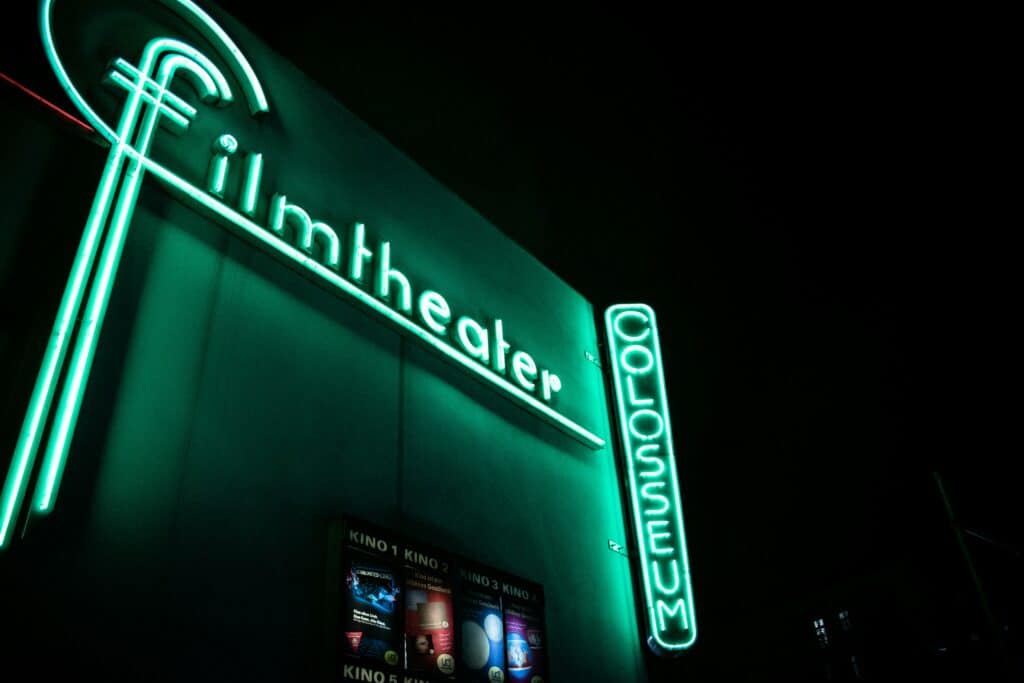Netflix was the first major streaming service, and it introduced a different content consumption paradigm. We no longer had to visit the theatre to watch movies or wait for new TV show episodes every week. The service ensured its subscribers had a seemingly never-ending supply of content to enjoy. With its success came other streaming services, and we are now starting to understand how their existence is impacting traditional cinema.

The Evolution of Film Distribution
These days, it is typical for movie enthusiasts to have access to the latest movies a few weeks after their release. It is also common for those who enjoy particular movies to talk about them on social media, perhaps create gif and videos to showcase the parts they love or write posts about the movies they have watched.
However, things never used to be this way. Traditional movie distribution and marketing followed a pattern that had been in place for decades. Once a movie was released, it had a theatrical run, then it was released on home video, cable television and finally on broadcast TV.
Releasing movies this way established a windowed system that allowed production companies to maximize revenue by timing each of these phases very carefully.
Streaming services disrupted and continue to disrupt this model in several ways.
Simultaneous Releases
Today, it is very common, expected even, for movies to premiere in theatres and on streaming platforms at the same time. Many movies even skip the theatrical release and go straight to streaming.
Of course, both of these are not typical for bigger movies with larger budgets and revenue expectations. However, the number of movies being released this way is significant enough to shift the industry in a specific direction.
This shift has made industry players rethink how they value movies. They have found, rightly, that the metrics used in the past to measure success are no longer applicable to play only a small part in determining and telling of today’s movies’ success.
Changing Viewing Habits
Streaming services have also fundamentally changed how we consume movies. The convenience and simplicity of on-demand streaming means viewers can watch a movie at any time as long as it is available on at least one streaming service.
The implication is that they do not have to go to a theatre to watch a movie.
We also need to mention binging, which is possible when streaming but not in a movie theatre. Netflix was the first service to encourage binging, and it is now becoming an ingrained movie-watching habit and experience.
Both of these shifts mean the scheduled programming of the past is no longer as applicable today as it was in the past. Viewers do not have to adhere to specific viewing times, and they do not have to wait for too long for a movie to hit their screens.
A Push for Content Diversity
Streaming services have also positioned themselves as not just content distributors but also as original content producers. This means audiences have been exposed to new types of diverse content outside what they would have had access to in the past.
Their investments in this area have led to a surge in diverse storytelling, allowing underrepresented voices such as female movie stars to find audiences without the constraints of box office expectations.
The result is a demand for these diverse stories at the box office, and we are starting to see new types of content with significant audiences and people interested in them.
This demand and push for diverse content means traditional cinema has had to adapt and screen these types of content when they would otherwise have been hesitant to do so in the past.
Revenue Restructuring
Another impact of streaming services in traditional cinema is the need for cinemas to restructure their revenue sources.
In the past, cinemas relied on concessions and ticket sales for most of their revenue. With more people waiting for movies to be released on streaming services and fewer exclusive theatrical releases, they have had to diversify.
It is becoming more common for cinemas to stream live events, host gaming tournaments, and create exclusive or premium viewing experiences to keep attracting patrons.
New Investment Patterns
Cinemas have one significant advantage over streaming services: their screens and viewing experiences. Major theatres know this and are starting to invest in premium formats like 4DX and IMAX to provide an experience that streaming services cannot replicate.
If you look closely, you will realize that the biggest movies over the last year or so have been released under the IMAX format, and many more cinemas now support this format.
For this reason, we are seeing a significant shift where cinemas are not competing with each other for exclusive content access but instead on viewing experiences.
Streaming services have significantly changed how view content and how creators create and distribute movies and content. While the shifts are significant, streaming has not led to the end of cinema. Instead, it has forced the industry to innovate and adapt, which has led to a richer and more diverse entertainment landscape and movie-going experiences.

Latest Posts
-


Film Trailers
/ 1 day agoFirst trailer for Darren Aronofsky’s ‘Caught Stealing’
Sony Pictures has released the debut trailer for Darren Aronofsky’s new film Caught Stealing,...
By Paul Heath -


Film Reviews
/ 3 days ago‘Lilo and Stitch’ review: Dir. Dean Fleischer Camp (2025)
Director Dean Fleischer Camp won audiences over with the fantastic Marcel the Shell with...
By Kat Hughes -


Apple TV
/ 3 days agoApple TV+ debuts first look at new season of ‘Platonic’ with Seth Rogen and Rose Byrne
Apple TV+ has landed a first look at the second season of Platonic, the...
By Paul Heath -


Television
/ 3 days agoTrailer for HBO Max prequel series ‘IT: Welcome to Derry’
A teaser trailer has landed for HBO Max’s IT: Welcome to Derry which will...
By Paul Heath





